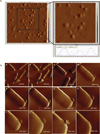Envelope control of outer membrane vesicle production in Gram-negative bacteria
- PMID: 23521754
- PMCID: PMC3731998
- DOI: 10.1021/bi400164t
Envelope control of outer membrane vesicle production in Gram-negative bacteria
Abstract
All Gram-negative bacteria studied to date have been shown to produce outer membrane vesicles (OMVs), which are budded, released spheres of outer membrane with periplasmic content. OMVs have been implicated in the delivery of virulence factors in pathogenesis. However, OMVs also benefit nonpathogenic species by delivering degradative enzymes to defend an ecological niche against competing bacterial species, and they can serve as an envelope stress response. Despite these important roles, very little is known about the mechanism of production of OMVs. Here we review the advantage of vesiculation, particularly in a nonpathogenic context, as well as the hurdles that have to be overcome in Gram-negative envelope architecture before a vesicle can form and bud. Lastly, we address the question of whether OMV production is a stochastic or regulated process.
Figures




References
-
- Mug-Opstelten D, Witholt B. Preferential release of new outer membrane fragments by exponentially growing Escherichia coli. Biochim Biophys Acta. 1978;508(2):287–295. - PubMed
-
- Zhou L, Srisatjaluk R, Justus DE, Doyle RJ. On the origin of membrane vesicles in gram-negative bacteria. FEMS Microbiol Lett. 1998;163(2):223–228. - PubMed
-
- Hoekstra D, van der Laan JW, de Leij L, Witholt B. Release of outer membrane fragments from normally growing Escherichia coli. Biochim Biophys Acta. 1976;455(3):889–899. - PubMed
-
- Mayrand D, Grenier D. Biological activities of outer membrane vesicles. Can J Microbiol. 1989;35(6):607–613. - PubMed
Publication types
MeSH terms
Substances
Grants and funding
LinkOut - more resources
Full Text Sources
Other Literature Sources

